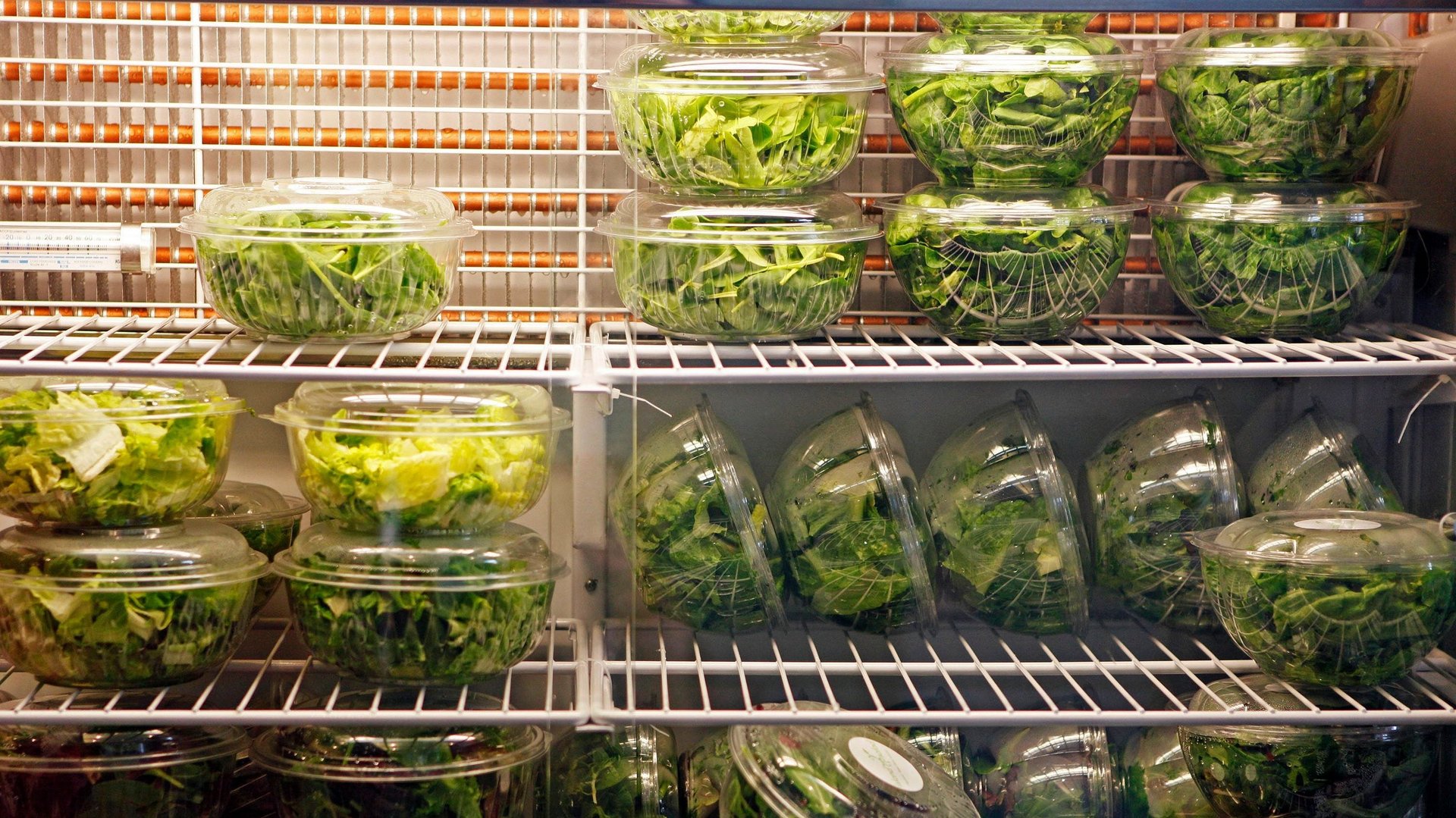The chopped salad debate forgets one key thing: Kale isn’t lettuce
To chop or not to chop? At some New York City salad concerns that is no longer the question. When Just Salad, a Manhattan lunch hot spot, announced this week that it was doing away with its chopped-on-demand option—joining several other lettuce-dependent chains—salad eaters across the city raised their forks in protest. As they see it, with unchopped greens it’s impossible to get every component of the salad into a single bite. Some diners, at least.


To chop or not to chop? At some New York City salad concerns that is no longer the question. When Just Salad, a Manhattan lunch hot spot, announced this week that it was doing away with its chopped-on-demand option—joining several other lettuce-dependent chains—salad eaters across the city raised their forks in protest. As they see it, with unchopped greens it’s impossible to get every component of the salad into a single bite. Some diners, at least.
Erik Oberholtzer, CEO of Tender Greens, a salad emporium with nearly 30 locations in the US, cast serious shade on choppers in an interview with Bloomberg. “As chefs, you’d never chop greens. The more you cut them, the more they release moisture, lose texture, and disintegrate. Maybe others come from a business background, not culinary, so they don’t know how to treat the product.”
Reasonable salad lovers—if that’s what you can call anyone willing to fork out $10-plus on lunch—can disagree on the relative merits of chopped romaine, iceberg, spinach or arugula. Kale though—that darling of glossy food magazines, nutritionists and New American bistros—needs to be chopped. It’s simply inedible otherwise.
What’s a kale salad super fan to do? Bring your own from home with the knowledge that not only are you saving money and time spent standing on a salad line, your actual salad is very likely to be far much more delicious.
Alison Cayne, founder of the cooking school and café, Haven’s Kitchen, said that kale has much more fiber than your typical lettuce, and needs a some help in the form of chopping, massaging, and even a sort of marinading not just to be palatable, but to be more comfortably digested. “Assuming you’re not talking about the pain in the ass of eating a big leaf of kale, I think that one of the reasons it’s better chopped is that you’re starting the breaking down process for your body,” she told Quartzy over the phone.
Unlike tender lettuces that start to wilt unappetizingly as soon as they meet dressing, kale actually benefits from hanging out with salt and acid for several hours. Which means a salad you dressed in the morning is likely perfectly delicious by lunchtime. “My favorite salad with kale is with a little sesame oil and a little rice wine vinegar and some sesame seeds,” Cayne said. “Maybe some black rice, maybe a little avocado, maybe some grilled shitake mushrooms.”
To prepare kale for a salad, Cayne instructs cooks to hold each piece by the stem, then use your other hand to strip the leafy parts away from the stem. “You definitely don’t want to eat the stem,” she says. Stack them up neatly, then roll them up, “you make like, a cigarette,” Cayne says, and cut the rolled kale into thin strips horizontally, making a chiffonade. Then either massage by sprinkling with sea salt and rubbing it into the kale, or toss with a vinegar-based dressing to soften it.
“It sits and it gets nice and sort of glisten-y and it absorbs all the flavors of the oil and the vinegar and the salt,” Cayne says. “What I would do is that I would dress it first then put it in your container, and then (add) say your peanuts or your sesame seeds or…any type of crouton-y thing on top so the dressing isn’t affecting them.”
As for the chopped versus non-chopped debate, Cayne suggests an entirely different way of dealing with lettuce. “I like to eat salad like a finger food, I’m not embarrassed to say it,” she said. “I like butter lettuce, or little gem or baby romaine and I like to have it on my plate with all of my different things, whether it’s cherries and walnuts, or avocado, or grilled chicken and I like to take each leaf and make it a vehicle for eating the other things…I eat it like I’m eating a taco.”